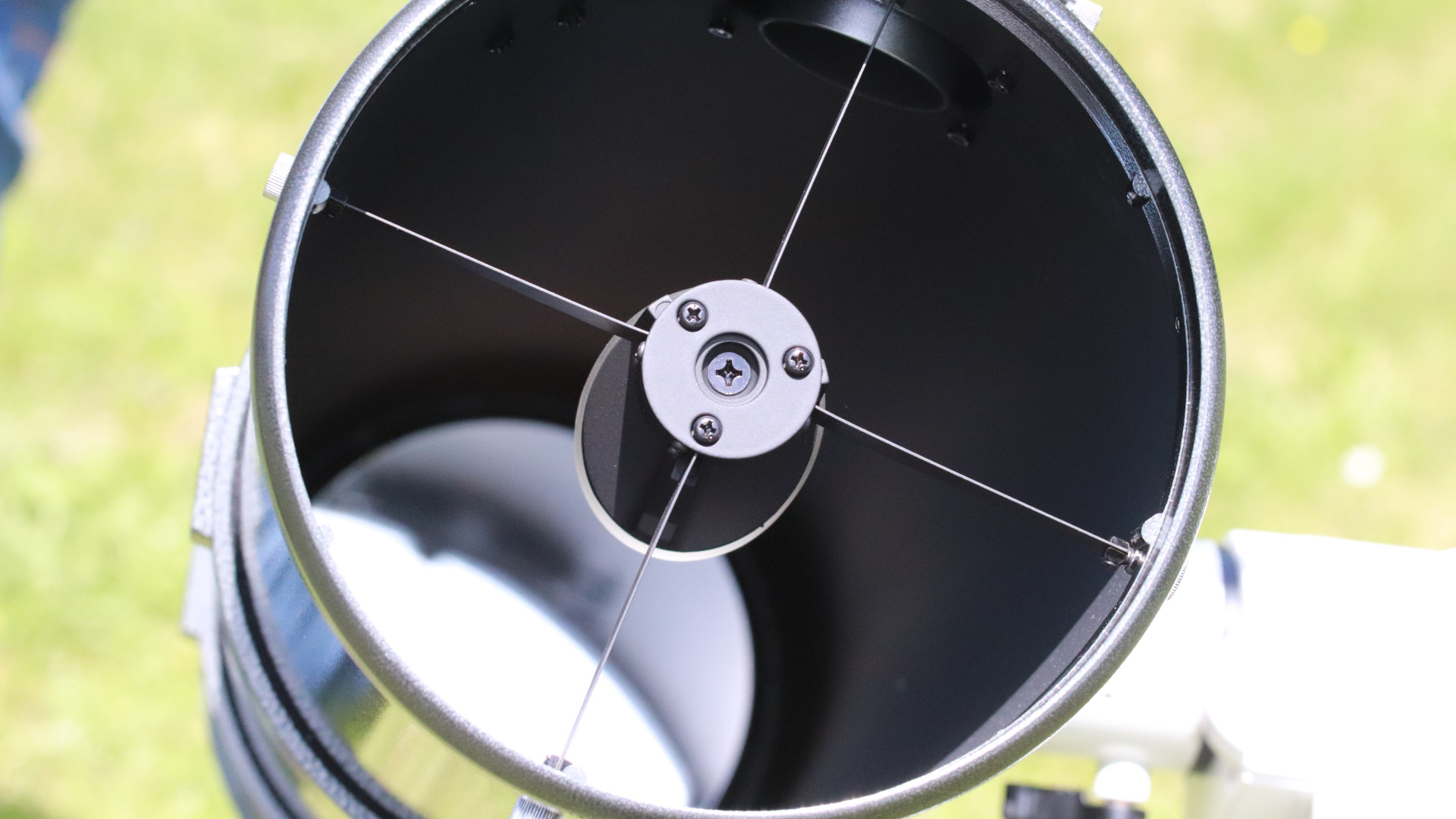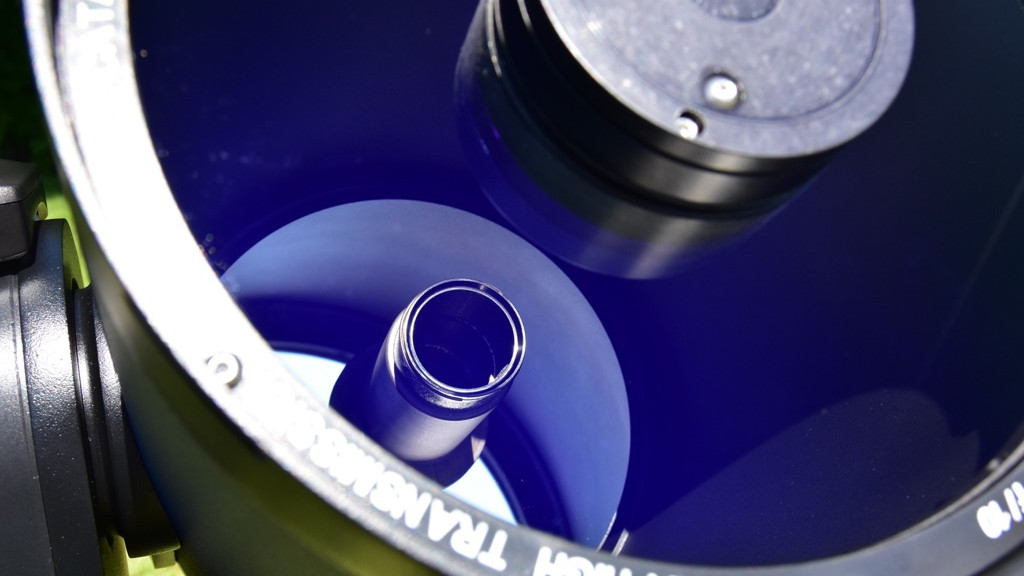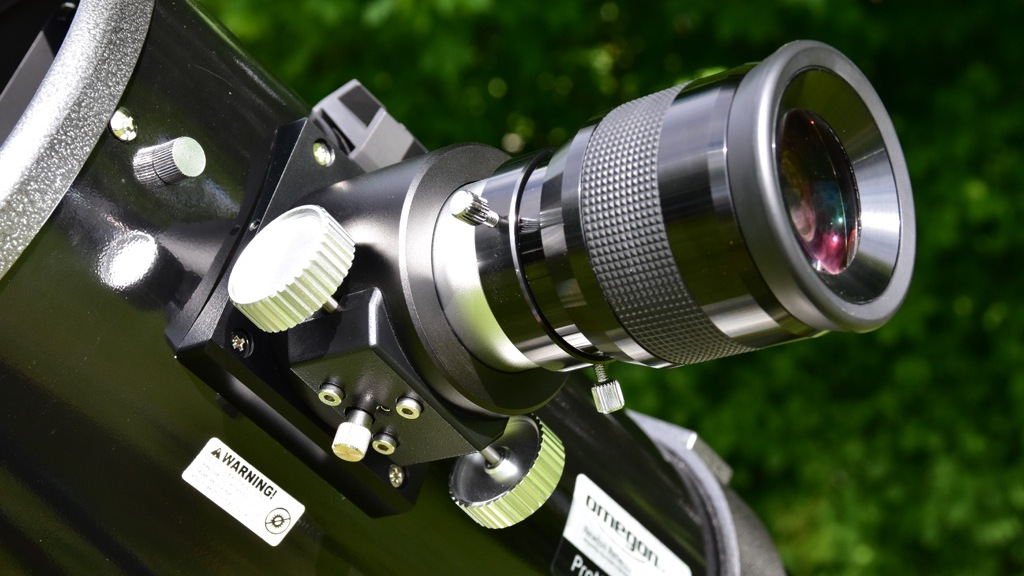Resolving power
What it means for observations and how to determine the resolution of a telescope with a simple formula.

The resolving capability of a telescope is an important measure. It increases with the increasing aperture of the optics. If the telescope has high resolution, you will be able to recognise fine details on objects. But what else is behind it?
Maybe you have heard the term visual acuity before at your optician? An optician is very happy if you have optimal acuteness of vision, and would speak of a visual acuity of 1.0. This value corresponds to a resolving capability of one minute of arc. Some people, however, never reach such high resolution and others might even have a slightly higher resolution - that is in the nature of things and is perfectly normal.
The resolving power of the naked eye is about one minute of arc during the daytime and about 2 minutes of arc at night. You can even recognize a few double stars with your naked eye, such as Alcor in the Big Dipper; the middle star Mizar and its smaller companion Alcor were used in ancient times as a way of testing eyesight.
How important is aperture?
The smaller the angle between two double stars or details on a planet, the greater the aperture required in order to achieve higher resolution and be able to separate the objects. The separate resolution of two objects is often called minimum separable acuity.
Thanks to telescopes’ large apertures, a very high resolving power can be achieved. While a 50mm telescope has a minimum separable acuity of around 2.7 arc seconds, a 200mm telescope achieves 0.7 arc seconds. With this resolution, these telescopes can cleanly separate two stars, which are these distances apart. Another factor in the resolving power is the size of the Airy disc that is formed in the telescope. This is because the higher the telescope’s resolution, the smaller the Airy disc appears in the telescope.
A simple rule of thumb
The resolving power can be easily calculated:
Resolving power = 138 / telescope aperture in mm
This calculation is a formula devised by Rayleigh and specifies minimum separable acuity, in which, for example, a double star system can still be seen as separated individual stars.
The following lists the resolving power for some common telescope apertures, according to the Rayleigh criterion:
- 60 mm = 2.3"
- 80 mm = 1.7"
- 100 mm = 1.3"
- 120 mm = 1.15"
- 150 mm = 0.92"
- 200 mm = 0.69"
- 250 mm = 0.55"
These are, of course, theoretical values that you will not be able to 100% achieve in practice. This is because a telescope’s resolving power is normally limited to around 1 arc second due to the air turbulence in the atmosphere. This means that telescopes with an aperture of more than 120 mm, do not bring any real gain in this area.
Rayleigh and Dawes criteria in comparison
What is the resolving capacity
The resolving capacity, also known as minimum separable acuity, indicates how small the angular distance between two objects may be whilst still being recognisable as two objects. The angular distance is measured in arc seconds ("). The following rule applies: 1" = 1/3600°
Double stars are best suited as test objects, especially those where the two components are almost equally bright. There are two criteria for the evaluation of the resolving capacity:
- The Rayleigh criterion is derived from diffraction theory: two objects can be observed as separate when the diffraction maximum of one object coincides with the diffraction minimum of the second. For a double star system, this corresponds to the image of an 8. From diffraction theory, for a wavelength of 550 nanometres (i.e. the maximum of human visual sensitivity): resolving power in arc seconds = 138 / aperture in mm. A telescope with a 120 mm aperture sees a double star system with a 1.15" separation between the two elements as an 8.
- The Dawes criterion is an empirical formula which is based on observations. According to this, you can also identify a star as a double star if it looks oval, so more like a 0 instead of an 8. From experience, the results of resolving capacity are as follows: resolving capacity in arc seconds = 117 / aperture in mm. A 120-millimetre telescope would depict a 0.9" double star as an oval object.
Technically, the resolving capacity is determined by the telescope’s aperture: the larger the aperture, the closer double stars or structures on planets may be, and still be recognised as such. In practice, air turbulence ("seeing") is the most important factor, which often limits the resolving capacity to one arc second. Added to this is the thermal behaviour of the telescope. It should be adjusted to the ambient temperature for observing.



